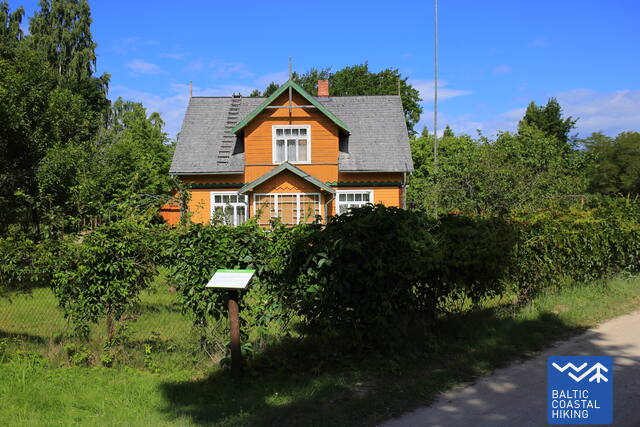 Pitrags village
Pitrags village
Village border on the side of Košrags is maked by the small River Pitragupe, also called the River Kukšupe. First mentioned in written sources around 1582/1583, in the Book of Dues of Piltene. In 1826, the village had eleven farmsteads with a population of 190. Locals were most active to protest against the new rent agreements offered by the baron of Dundaga in 1859, the unrest is known under the name of Dundaga Farmer’s Turmoil. Locals were Baptists, who in 1902 erected a Baptists House of Prayer. Elder people still recall legends of announcing and waiting for the end of world to come. The House of Prayers was the only church on the Livonian coast, which continued to serve its original purpose also during the Soviet Period.
Pitrags is the home village of the excellent Livonian folklore teller Marija Šaltjāre [1860-1930], who was born and lived in the village. It is said that she told more than 200 tales and stories, more than 90 folklore songs, children’s games, and has contributed much information about celebrations, Livonian beliefs and everyday life.
According to the population count of 1935, there were 51 farmsteads and 219 inhabitants in Pitrags. Only 59 (27%) of them were Livonians. Like in other villages, the predominant occupation was coastal fishing. Several sprat processing workshops (kūre) were opened in the village. Also in Pitrags a breakwater was built (in 1938) for seaweed harvesting. There were two shops, and not far from the village, on the River Kukšupe, a watermill was built. Already as early as in the autumn of 1939, the USSR army military base was established in Pitrags.
Likewise in other Livonian coastal villages, also Pitrags becomes a busy place only in summers. During winter, only some ten houses are inhabited; however, there are more permanent residents in the village than elsewhere – around 30.











